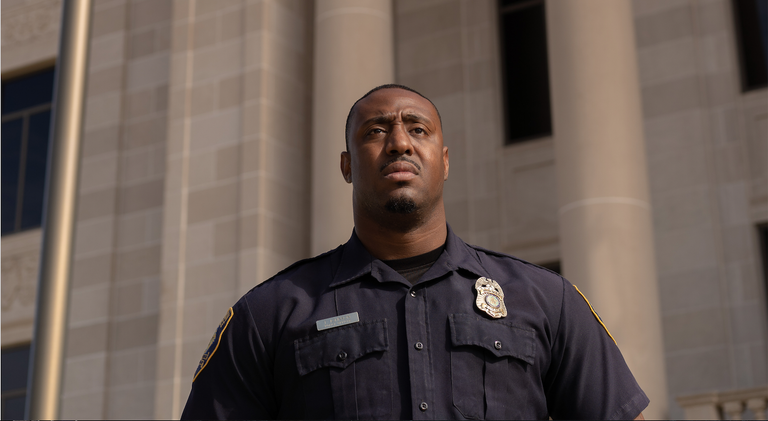
Education
Mike Brake | August 6, 2021
Sheriff says speakers at OEA symposium ‘seriously misguided’
Mike Brake
Presenters at a recent symposium for prospective teachers who labeled police officers as murderers and oppressors and urged teachers to refuse to cooperate with them only increased the chances that the teachers and students they claim to serve could fall victim to school violence, local law enforcement officers said.
“Parents want officers in their schools to keep their kids safe,” said John George, president of the Oklahoma City Fraternal Order of Police organization. “Our department has a large unit of school resource officers and they are in every high school and middle school in the Oklahoma City system. They are there every day building relationships.”
George said comments like those at the symposium only serve to undermine the school safety mission of those officers.
The Oklahoma City Police Department web page for its School Resource Officer unit says the unit includes 25 officers. Its mission includes mentoring students who “can come to know police officers as real people, and not just see them as stereotypes or strangers. Throughout the school years, our SROs form strong relationships with the students they protect and are a source of mentoring, counseling, and encouragement.”
Arrests or citations for students engaged in criminal conduct are used “only as a last resort,” the page notes.
The symposium comments were reminiscent of past statements made by some local activists. When the Oklahoma City Council was asked to authorize the budget for the SRO unit in August of 2020, Council members JoBeth Hamon, James Cooper, and Nikki Nice opposed the measure, citing what one news report called “student trauma.” The other six voting members approved the program.
Hamon has come under fire for comparing police to Murrah bombing terrorist Timothy McVeigh.
Oklahoma County Sheriff Tommie Johnson, who oversees a robust corps of school resource officers “from Deer Creek to Spencer,” said the presenters at the symposium were “seriously misguided."
“They need to sit down with a school resource officer and see what we really do before they pass judgment,” he said. Johnson said he worked with school counselors during his career as a police officer in Norman, where he said he was able to build strong relationships with some students.
“By being in the school, we as law enforcement officers can help in many ways,” he said, noting that some SROs have detected cases of child abuse in dysfunctional homes through their relationships at school.
Officers can also defuse potential threats, Johnson said, noting that during his service in Norman SROs in one school were able to identify a student who was planning a major act of violence at school and “get him the mental health care he needed.”
In fact, there is abundant evidence that the presence of police officers in schools has done much to prevent tragedies like school shootings. A 2020 report on averted school violence by the Police Foundation listed a dozen case studies where early intervention and police action forestalled school shootings or other acts of violence.
In one case, a school resource officer placed her body between an armed intruder and the principal at a high school and ultimately shot and killed the man, who had a “kill list” of planned victims. In another, the SRO pursued, tased, and disarmed a man with two guns who had invaded a high school intent on shooting up the cafeteria during lunch. Other reports cited students who went to school officials with information about classmates threatening violence.
“Most school attacks are averted because students reported their concerns,” the report noted. And according to a 2017 article in the FBI Law Enforcement Bulletin by Katherine Schwell and Ashley Mancik, such reports are often made more likely by the presence of a trusted school resource officer on campus.
“Law enforcement agencies play a vital role in school safety,” the article said. Those officers can help create a healthy school climate where crime is not tolerated, the authors said.
The anti-police comments were made at a recent symposium sponsored by the Oklahoma Aspiring Educators Association, which is in turn affiliated with the Oklahoma Education Association, the state-level affiliate of the National Education Association, which has increasingly espoused left-wing policies and points of view.
Dubbed a Racial and Social Justice Symposium, the event featured speakers who alleged that “police were brought into schools—have always been brought into schools—as a way to oppress, suppress, beat, and harm our black, indigenous, and students of color.”
Videos of the presentations were posted on the OEA website up until August 5, but have since been removed.
One speaker claimed that when teachers seek help from on-campus officers they do so “through our own lens of whiteness” and not because of any actual misconduct or criminal behavior by students.
Officers “murder black and brown unarmed men and women,” one of the speakers said.
Data compiled by the Oklahoma State Bureau of Investigation for 2018 showed that 30 individuals were fatally shot by police statewide that year, none on or related to school property. Eighteen of those were white, five black, three Hispanic, three American Indian, and one was listed as “other.” All but one was male. In virtually all of the cases, the suspects were armed and fired at or threatened officers. In others, they attempted to run over them with vehicles.
Mike Brake
Independent Journalist
Mike Brake is a journalist and writer who recently authored a centennial history of Putnam City Schools. A former reporter at The Oklahoman (his coverage of the moon landing earned a front-page byline on July 21, 1969), he served as chief writer for Gov. Frank Keating and for Lt. Gov. and Congresswoman Mary Fallin. He has also served as an adjunct instructor at OSU-OKC, and currently serves as public information officer for Oklahoma County Commissioner Brian Maughan.